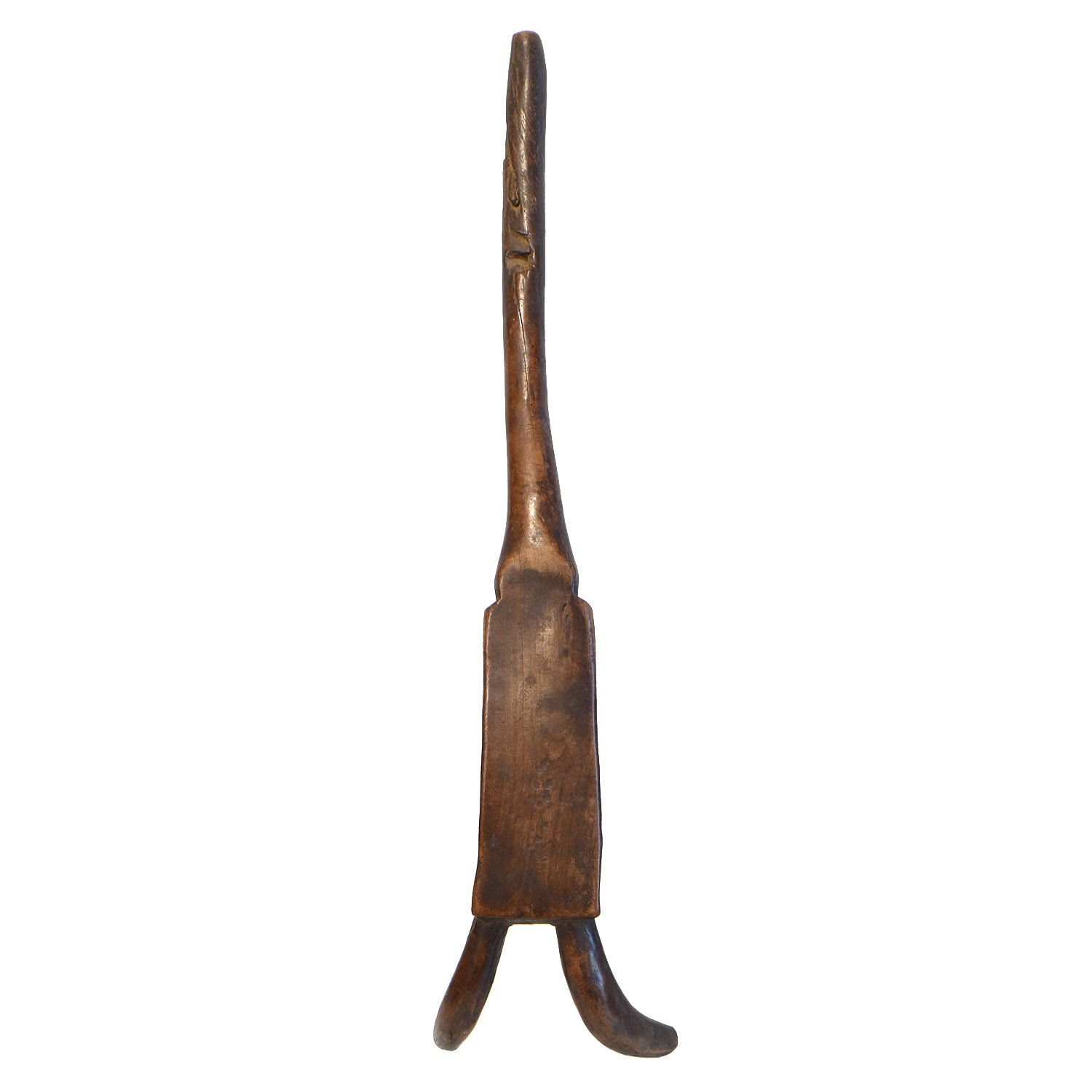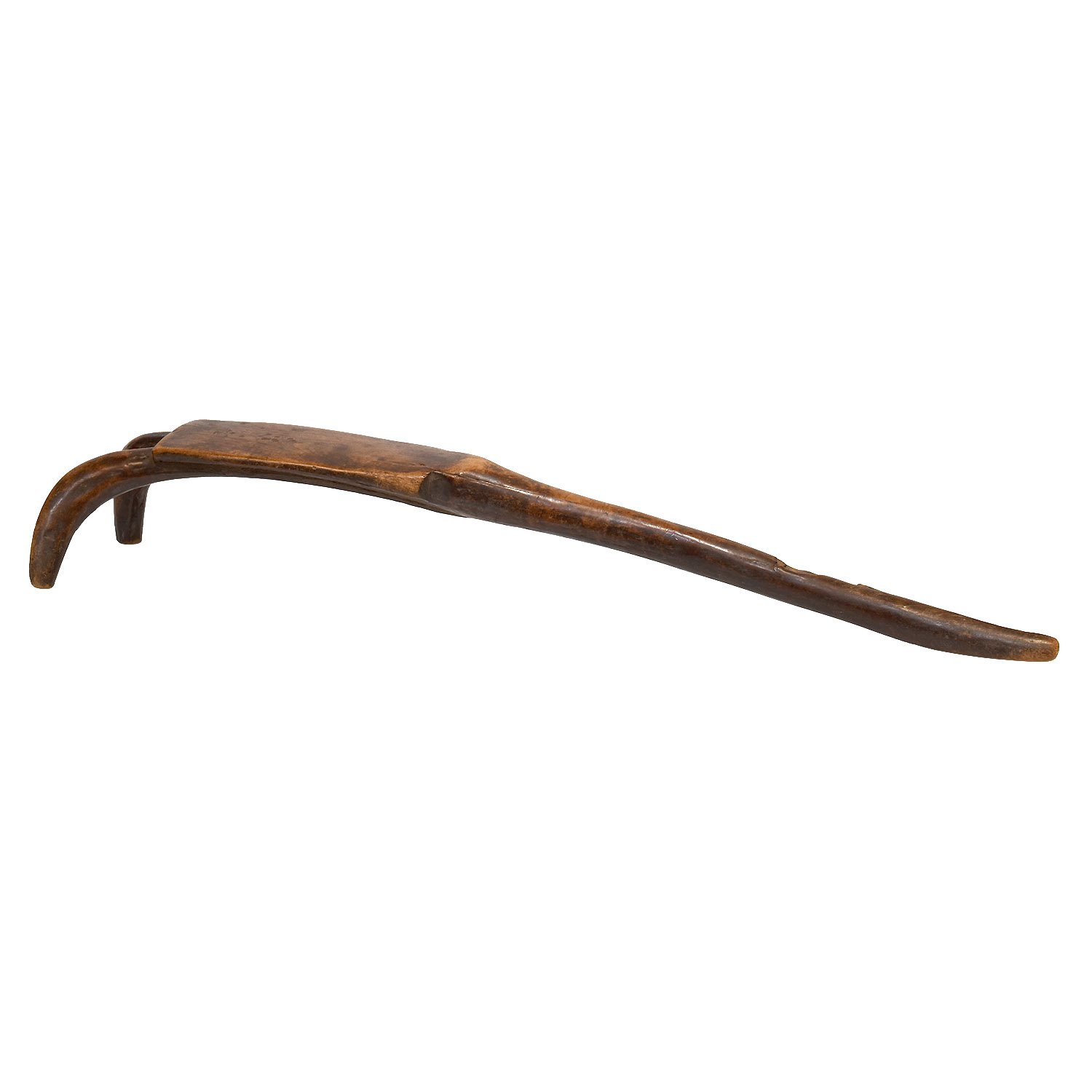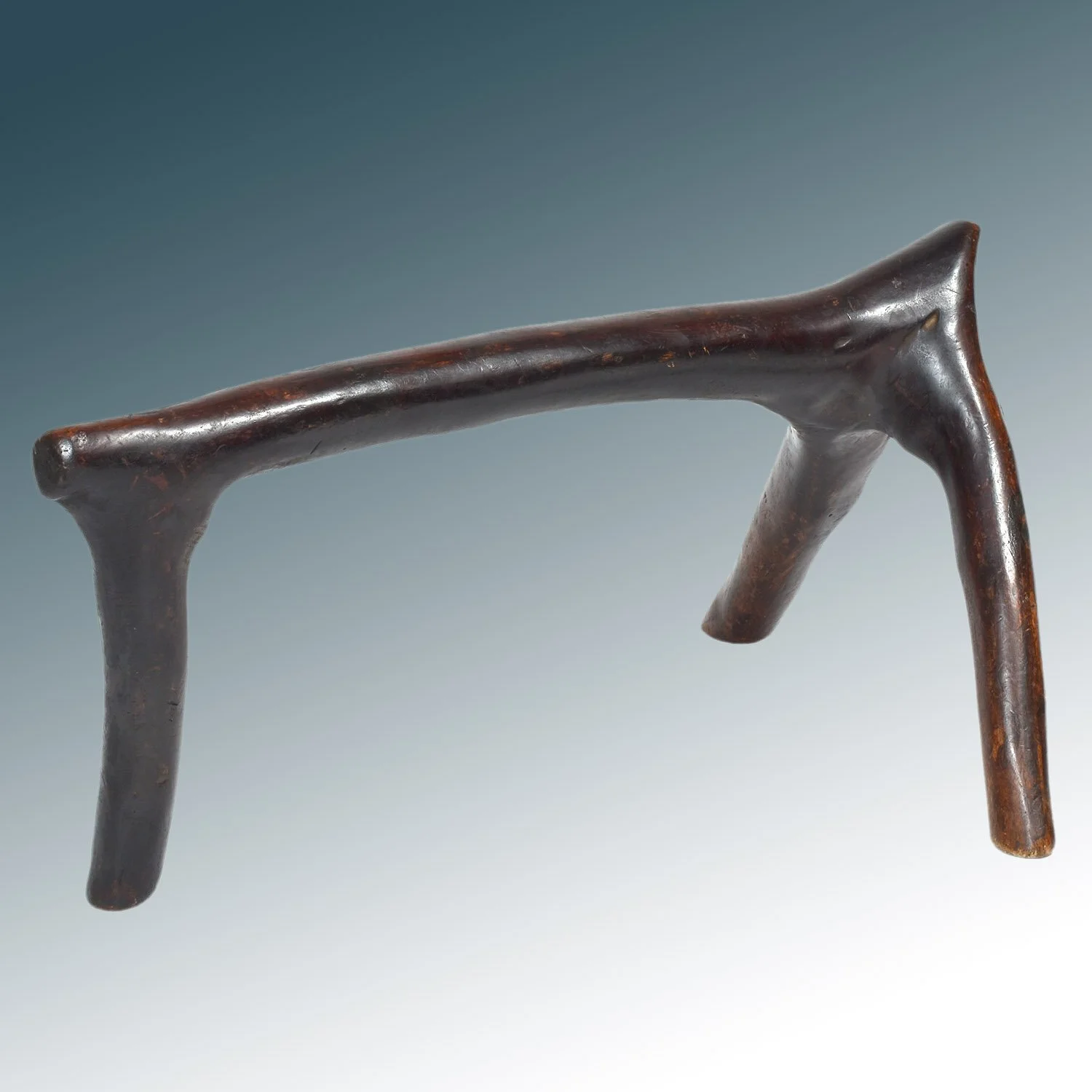Prestige Chair, Asante, Ghana












Prestige Chair, Asante, Ghana
Akan: Asante (Ashanti) People
Wood, brass, leather
Early 20th century
Dimensions: 41.4 x 21 x 22.5 in. / 61 x 53 x 57 cm
Provenance: Alain Lecomte Gallerie Abla, Paris
Most seating in Sub-Saharan Africa were low stools. In the sixteenth century, Portuguese explorers and traders introduced chairs with backs. African artists quickly improved the design with local motifs, which became status symbols for chiefs and dignitaries. This fine example is for a second-tier dignitary. Chairs for first-tier dignitaries would have arms.
The Asante (also known as Ashanti) as well as other cultures inhabiting central Ghana speak the Twi language and collectively form the Akan people. Akan artistic production focused primarily on decorative art objects - statues, furniture, and jewelry. The aesthetic traditions of the Asante influenced the artwork of cultures throughout all of Ghana and beyond.
Asante chairs such as this piece are based on 17th century European models and, unlike stools, do not have any spiritual function. They were used as prestige objects by important chiefs during festivities or significant gatherings (Bacquart, The Tribal Arts of Africa, 1998).
Some restoration.
Shipping quoted separately.









